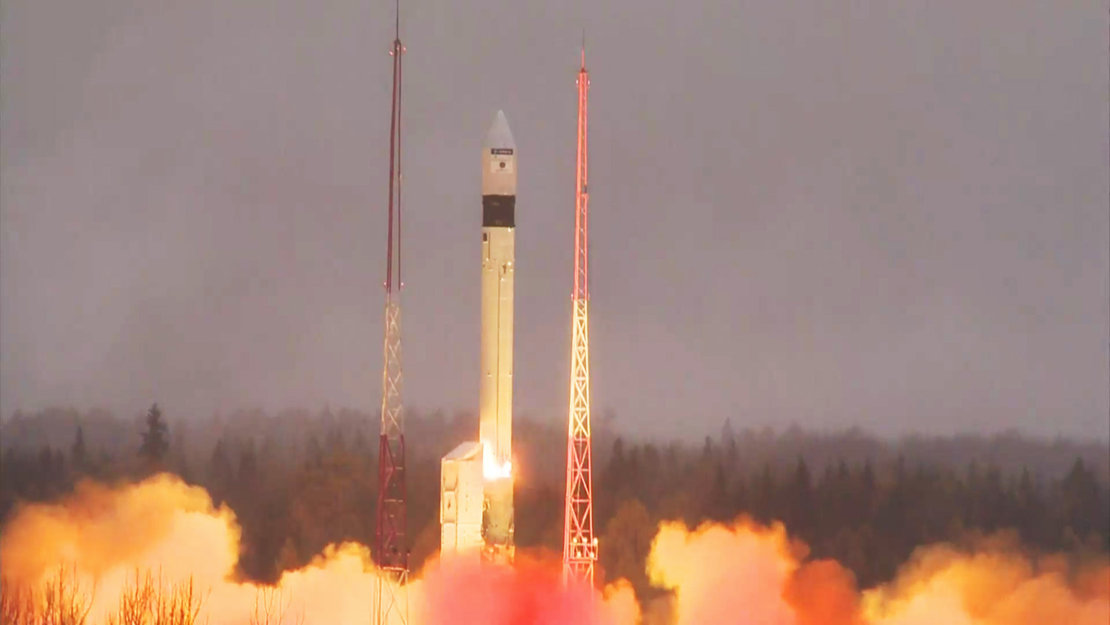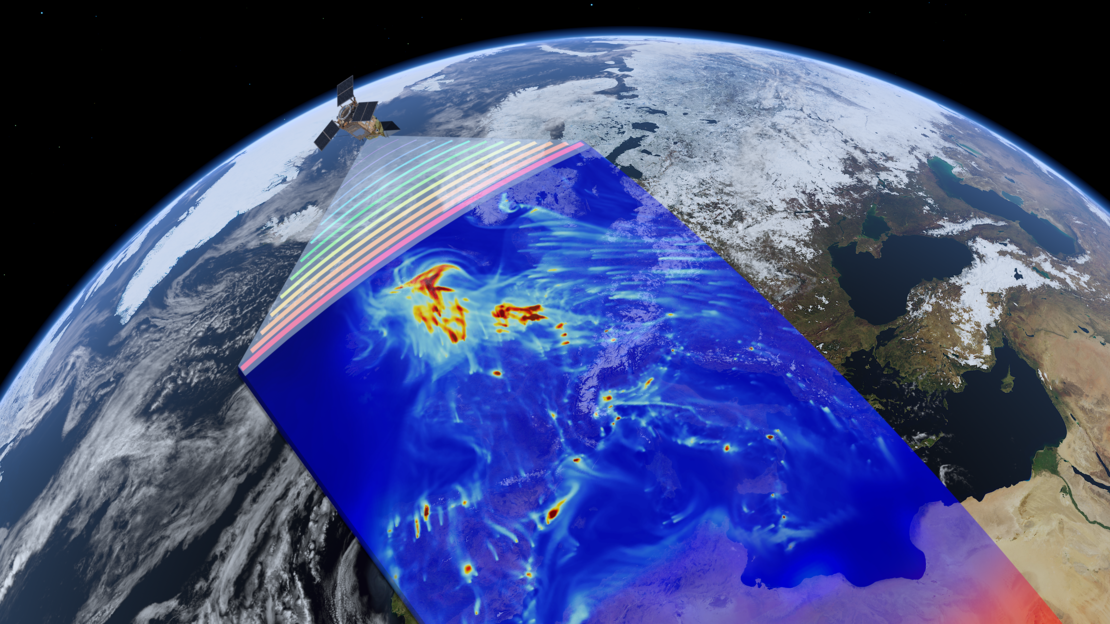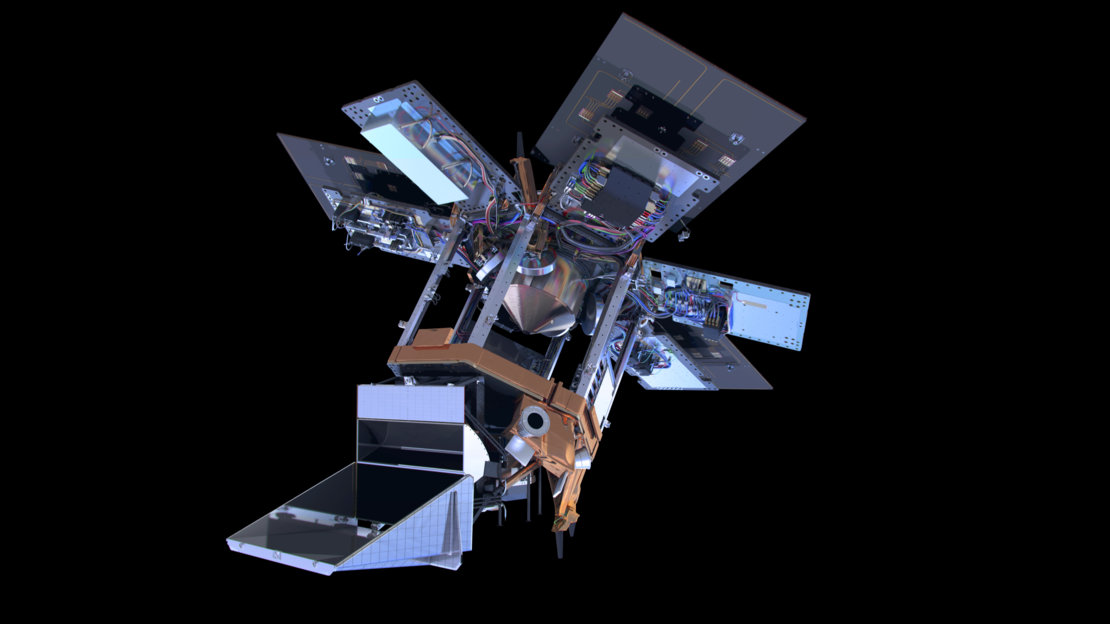Europe Launches Satellite to Map Air Pollution in Unprecedented Detail
LONDON —The European Space Agency (ESA) has launched the most advanced air-pollution-monitoring satellite ever built, with the mission of mapping the global distribution of dangerous air pollutants in unprecedented resolution.
The Sentinel-5P satellite lifted off aboard a Eurockot Rockot booster from the Plesetsk Cosmodrome, located roughly 500 miles (800 kilometers) north of Moscow, at 5:27 a.m. EDT (0927 GMT, 1227 local time) today (Oct. 13). About 1.5 hours later, ESA controllers acquired the first signal from the satellite, confirming that the craft had successfully made it to orbit.
Sentinel-5P, or Precursor, is part of the European Union's Copernicus program, the world's largest Earth-observation program. Copernicus is a joint venture between ESA and the European Commission, the EU's executive body; it currently consists of six satellites in orbit, including the Sentinel-5P launched today. Sentinel-5P is the first of the fleet to focus on measuring the chemistry of Earth's atmosphere.

"Having Sentinel-5P in orbit will give us daily and global views at our atmosphere with a precision we never had before," Josef Aschbacher, ESA's director of Earth-observation programs, said in a statement.
The launch of Sentinel-5P comes at an important time. The only satellite currently measuring air pollution, NASA's Aura, launched in 2004 and is already past its initial six-year mission lifetime.
According to Stephen Briggs, senior advisor to the director of ESA's Earth Observation program, the Sentinel-5P offers an improvement over the 13-year-old Aura satellite.

"Sentinel-5P carries an instrument called Tropomi, which is very powerful because it has a very wide swath — 2,600 kilometers wide [1,615 miles]," Briggs told Space.com during a launch event here hosted by the UK Space Agency and Airbus. "That means that it will give us the view of the whole Earth every day. Every day, we will get measurements of every point on the Earth."
Get the Space.com Newsletter
Breaking space news, the latest updates on rocket launches, skywatching events and more!
Tropomi, which is short for "TROPOspheric Monitoring Instrument," has been developed primarily by a Dutch consortium, led by the Royal Netherlands Meteorological Institute.
The spectrometer will measure a wide range of pollutants in the atmosphere, including nitrogen dioxide and sulfur dioxide, which come from the burning of fossil fuels, as well as carbon monoxide, formaldehyde, ozone and the potent greenhouse gas methane. Thanks to Tropomi's high resolution of 4 by 2 miles (7 by 3.5 km), scientists will be able to understand in detail how air pollution spreads in the atmosphere, see what the most important sources of air pollution are and identify accumulation hotspots.
"The current atmospheric chemistry missions have very low resolution," said Elizabeth Seward, a space scientist at Airbus, which built the satellite and participated in the development of the instrument. "If you see an image of the air pollution, you can't tell where is it coming from. Tropomi is unique in that it's going to be very highly accurate, and so we will be able to see where does that nitrogen dioxide, for instance, come from and how is the wind spreading it."
According to Briggs, space-based air-pollution measurements provide an important overview that complements the more detailed local ground-based measurements.

"From space, we are able to see the dynamics of the atmosphere, which shows us what the sources [are], and where the sinks are, of these different pollutants," he added.
Briggs said that Tropomi will be especially important for monitoring of methane, a greenhouse gas that is 28 times more potent in warming the planet than the more known carbon dioxide.
"Methane has been measured by Envisat in the past. That was at a very course resolution," Briggs said. "We will want to see much more detailed measurements of methane in the future. Understanding what sources and sinks are for methane is very important for us to understand climate."
Emitted from agricultural source, such as cow manure, as well as from oil and gas exploration, methane is of great concern to the climate research community. While emissions of carbon dioxide have been flattening out over the past few years, emissions of methane keep rising sharply, according to recent studies.
Sentinel-5P is a precursor to the Sentinel-5 instrument that will be flown on the European meteorological satellite MetOp-SG in 2021. The European Commission decided to build the precursor craft to plug a data gap left after the retirement of the Envisat satellite in 2012.
Follow us @Spacedotcom, Facebook and Google+. Original article on Space.com.
Join our Space Forums to keep talking space on the latest missions, night sky and more! And if you have a news tip, correction or comment, let us know at: community@space.com.

Tereza is a London-based science and technology journalist, aspiring fiction writer and amateur gymnast. Originally from Prague, the Czech Republic, she spent the first seven years of her career working as a reporter, script-writer and presenter for various TV programmes of the Czech Public Service Television. She later took a career break to pursue further education and added a Master's in Science from the International Space University, France, to her Bachelor's in Journalism and Master's in Cultural Anthropology from Prague's Charles University. She worked as a reporter at the Engineering and Technology magazine, freelanced for a range of publications including Live Science, Space.com, Professional Engineering, Via Satellite and Space News and served as a maternity cover science editor at the European Space Agency.









